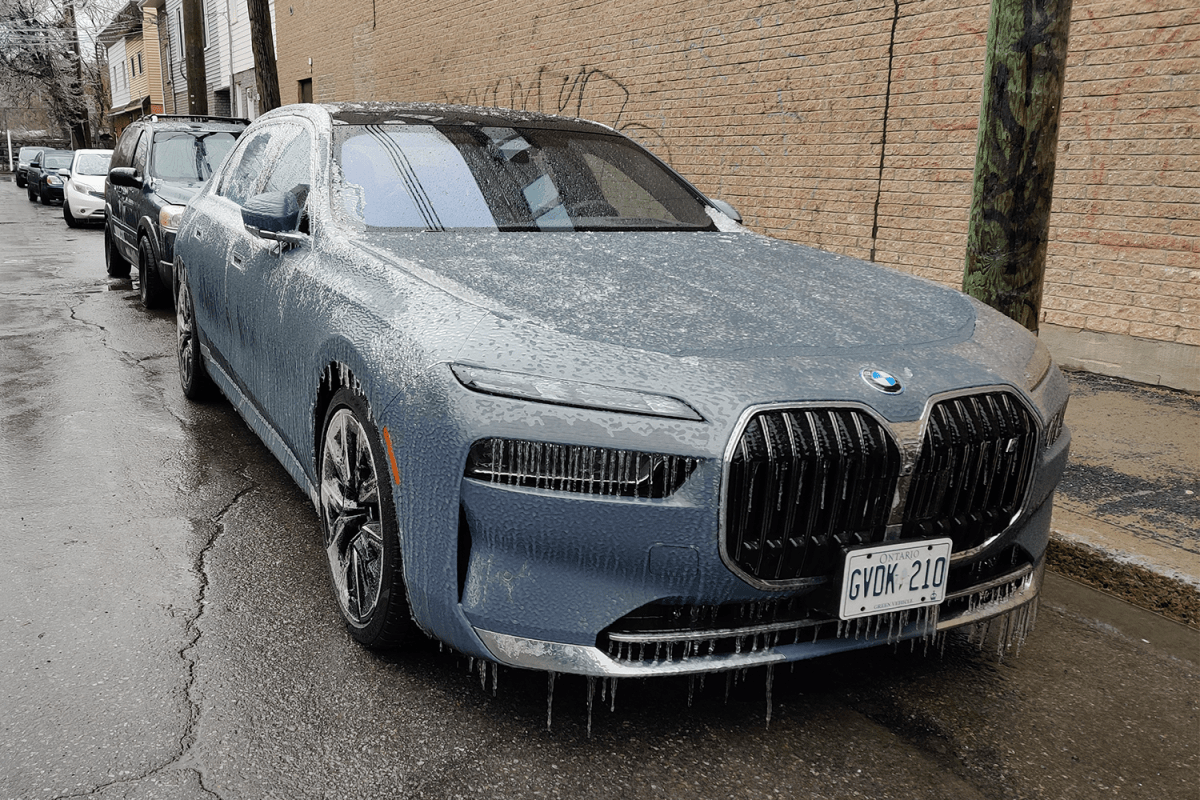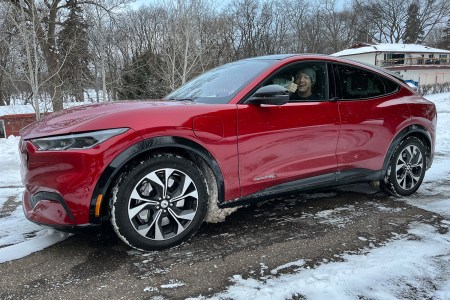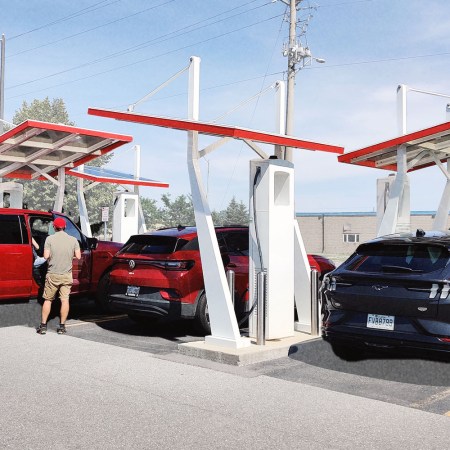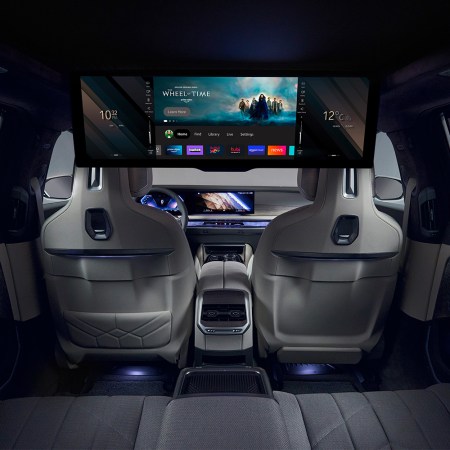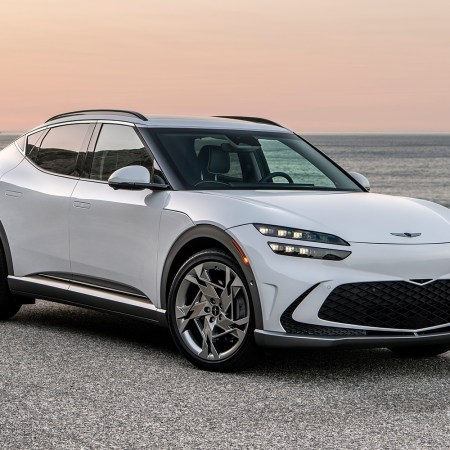If you ask most drivers to describe their worst EV nightmare, chances are it would sound something like this: trapped in a days-long blackout that’s robbed over a million homes of electricity, suffocating under a blanket of ice that completely coats branches, houses and streets while it snaps trees and downs transmission lines.
That’s exactly the situation I faced the first week of April here in Montreal, Quebec, after the island I live on was pelted by endless torrents of freezing rain that transformed the city into a slippery, chaotic wasteland plunged into darkness by the complete and utter failure of the power grid — all while I had the BMW i7, the German brand’s electric flagship, parked in my driveway.
I very quickly learned that the narrative so often peddled about the practicality of battery-powered vehicles in a post-electric apocalypse is almost entirely inaccurate. Not only did the i7 see me through a province-wide disaster in class and style, but the very fact that it was an EV guaranteed me a safe harbor in a storm that robbed me of my home’s heat, my internet connection and the contents of my refrigerator.
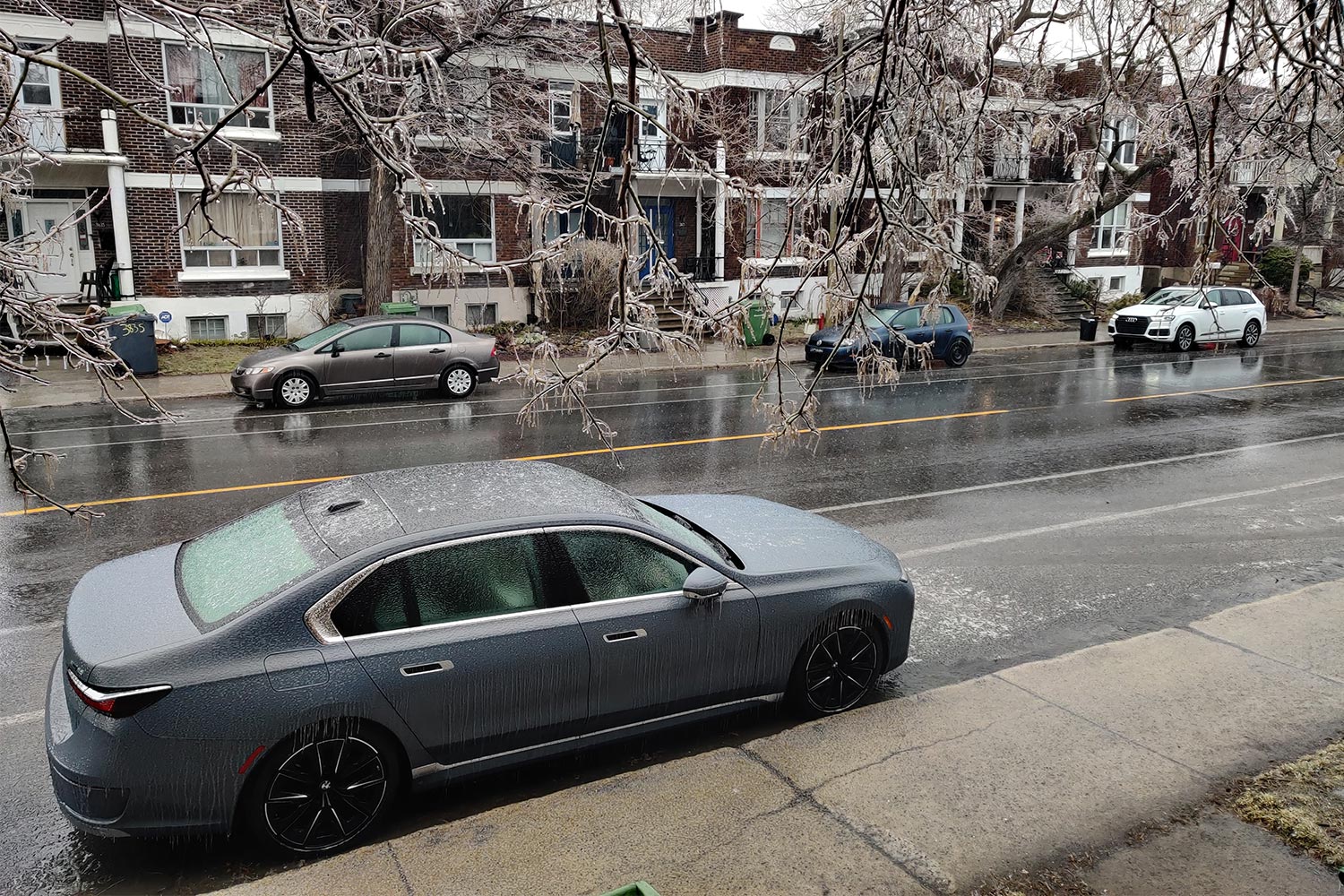
History Repeating
Quebec is no stranger to major ice storms wreaking havoc with electrical infrastructure. Nearly 25 years ago a similarly destructive freeze occurred in the depths of winter, knocking out power to millions of customers for weeks, and in some cases months, as repair crews struggled to deal with collapsed towers and severed wires on a colossal scale.
Flash-forward to 2023, and this time a late-spring storm centered itself over the Montreal urban area. Within an hour of the sub-zero rain peppering the city, the windows of my office had gone completely opaque with ice; 90 minutes after that, the tree in front of my house had bowed over and cracked a 14-foot branch onto the roof of a parked minivan, joining the nearly 900 other fallen trees and 3,000 snapped branches that gave in to the steadily mounting frozen weight during 36 hours of nonstop precipitation.
I Idled in an Electric Car for 12 Hours in the Freezing Cold to See What Would Happen
The I-95 shutdown ignited a debate about EVs in winter, so I did an extraordinarily mundane testReports of the island’s sputtering electrical grid started rolling in from friends and neighbors almost immediately. By early evening my own block had also succumbed, with only the steady orange glow of exploding transformers illuminating the streets as their fires pulsed in time with the steady 60-hertz rhythm of alternating current in its death throes. Skidding across the skating rink that stood in for the sidewalk, I chipped through the layer of ice that coated the i7, which had miraculously escaped serious arboreal injury, and headed out on a reconnaissance mission into the night.
Pushing Back the Darkness
The BMW’s enormous 101.7-kWh battery was my first advantage in surviving the storm with transportation intact. Even at 85% capacity, I still had more than 200 miles of driving range available, and close to the vehicle’s official 318 mile estimate were I to pilot the machine under theoretically perfect conditions, according to its trip computer. Given that current circumstances were significantly less than ideal, I was more inclined to believe the less rosy estimate showing on the dashboard, but that still felt like a solid buffer even without knowing how long I’d be unable to charge at home.
Also handy? The i7’s four-wheel steering, whose tight turning circle I found myself taking advantage of again and again as I was forced to double-back the super-sized sedan on streets rendered inaccessible by massive old-growth tree trunks strewn artlessly across the asphalt. The BMW’s LED headlights (which swap out the brand’s “laser” design for one incorporating Swarovski crystals — yes, really) lent a tint of daylight to my otherwise blacked-out surroundings, helping me pick around bushels of branches that dotted the neighborhood.
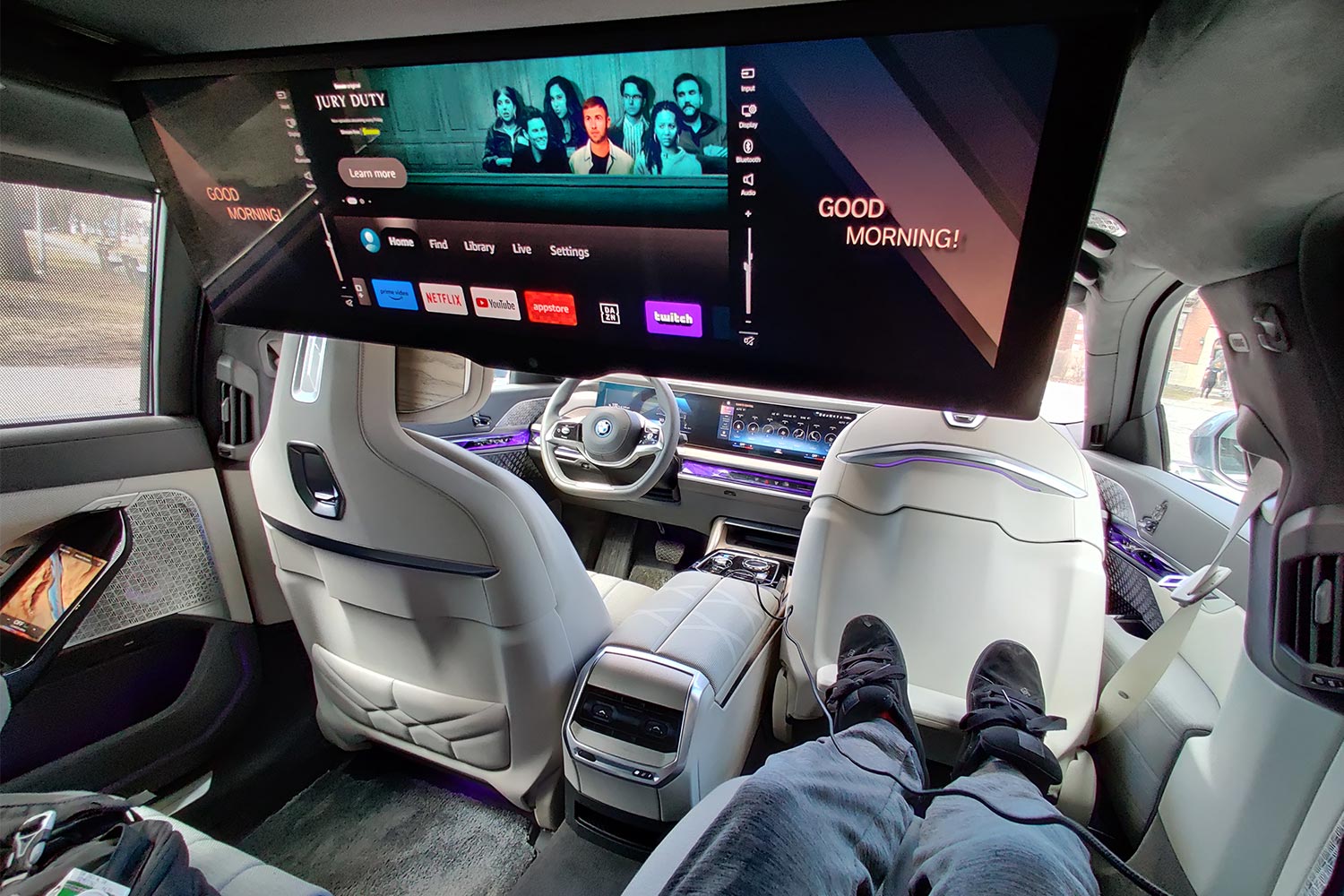
Not Just Surviving — But Thriving
The following morning my electrical outlets were still dry, and my lightbulbs continued to idle after their switches were flicked. It’s here that the BMW i7’s suite of blackout survival skills truly demonstrated the utility of an electric vehicle to reintroduce a semblance of normality to quotidian life.
As a true executive sedan, the i7’s back quarters are meant to evoke the kind of comfort and coddling more akin to a high-end lounge as opposed to a standard automobile. Its rear seat, which is upholstered in trend-bucking wool rather than traditional leather, offers an exceptional degree of recline, and coupled with the tilt-and-slide action of the front passenger seat, and the small ottoman and footrest that come with it, the overall experience evokes a first-class Dreamliner luxury pod.
What better place to wait out the work crews as they toiled to turn on the juice? Stretched out in the back of the BMW, I could take advantage of not just its broadband internet connection and ample power supply to my laptop and various other devices, but also fold down its ludicrously large, roof-spanning LCD display and pull up nearly any streaming entertainment service I desired. All of this, of course, while my privacy was guaranteed by the vehicle’s side-and-rear screens that kept prying eyes from peering into my palace of power.
Even with all of that gear running, I was never in any real danger of the BMW’s battery dipping low. On the second day of no electricity, I was able to direct the i7 towards a small patch of grid that had been restored, whereupon I discovered a functional curbside charging station. I hunkered down at the 7-kW plug, living my best life in a darkened world as I surfed one of the many German YouTube techno channels that showed up as favorites on the 8K screen, all at the affordable charge rate of a dollar per hour.
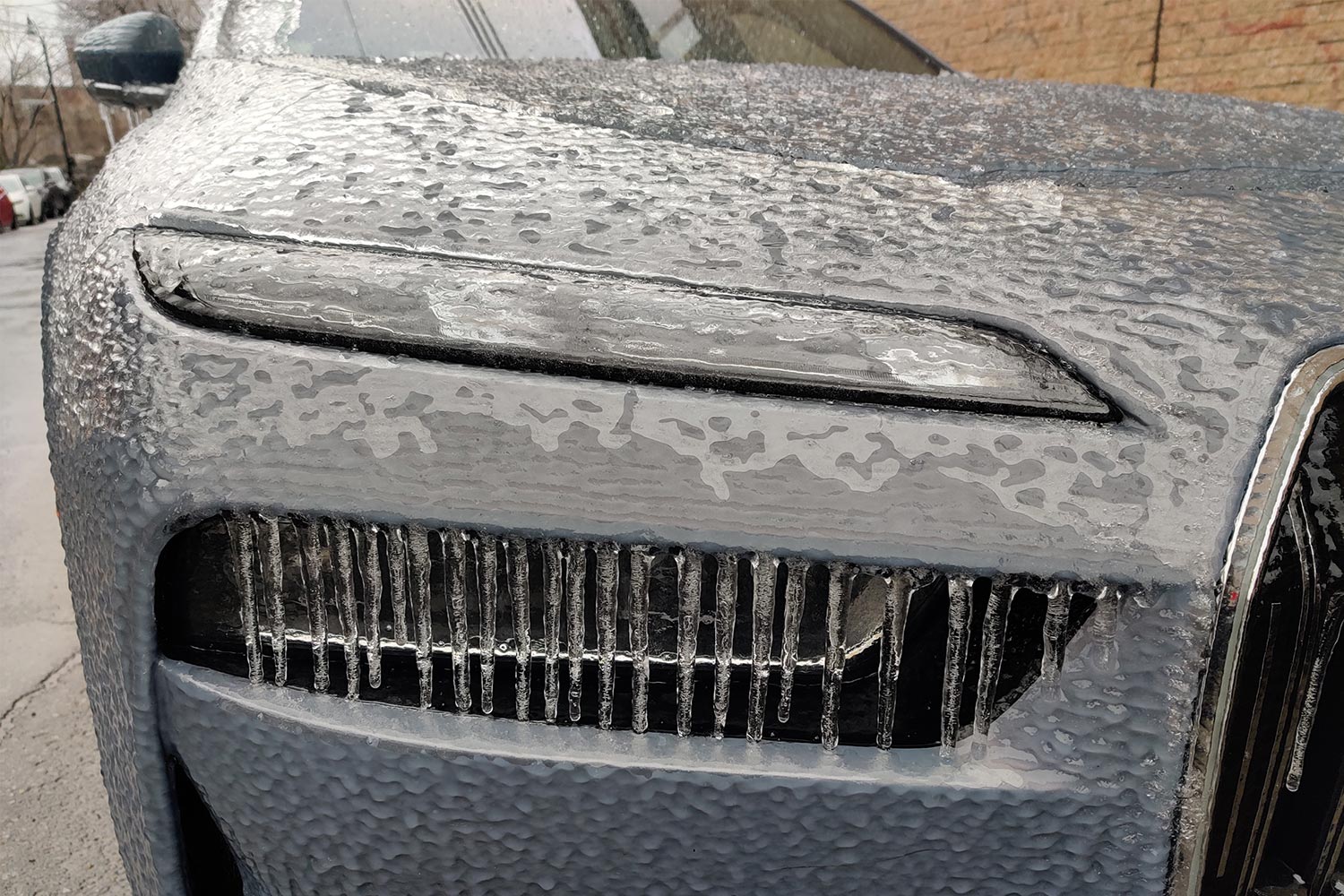
Flipping the Charging Script
Doomsayers are fond of pointing out the perceived perils of electric vehicles in a major disaster, harping on the inability to easily plug in and recharge as being an insurmountable Achilles heel. It’s rarely pointed out that gas-powered autos face the same issues when it comes to locating a functional fueling station in the face of a major blackout. Yes, some locations can operate their pumps via generators, but left out of that conversation are the long lines of cars waiting for fuel from drying tanks, with limited restocking possible due to blocked roads and other logistical hurdles.
Employing the same logic, I was able to venture out of my immediate neighborhood and easily find a functional charging station within 24 hours of the lights getting switched off, as the grid began its patchwork recovery. A day after that I pointed the BMW outside the city entirely, heading off on a 100-mile trip towards a region of the province that had avoided being slammed by ice, making use of readily available charging stations along the way
The BMW i7 became my lifeboat during the 47 hours I spent cast adrift in a chilly sea of absent electrons. Far from being a liability in an electricity-free environment, the car’s ability to act as a power station and warming spot for my household — and the extreme comforts that come as part and parcel of its $120,000 starting price — were a beacon during a bout of catastrophic weather. I wasn’t the only one to sample the fringe benefits of an EV during an electrical calamity, as a friend used his battery-powered car to keep his refrigerator and freezer running for a full five days, saving him a significant sum in restocking his food supply.
While there are plenty of reasons to press pause on purchasing an electric vehicle — including relatively high purchase costs, inadequate charging infrastructure in many areas of the country, and of course range anxiety — the fear of failing to survive a Thunderdome-esque, electricity-free event shouldn’t be on that list. If anything, an EV is your ticket to staying warm and comfy while waiting out the return of modern civilization.
This article was featured in the InsideHook newsletter. Sign up now.
